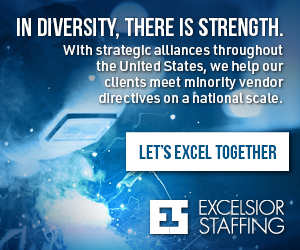US Immigration and Demographic Growth
A 2024 Migration Policy Institute (MPI) report showed that immigrant-origin adults were the primary source of demographic growth in the U.S. for the past two decades:
- Without immigrant-origin adults, the US child population would have been reduced by over 5 million between 2000 and 2023.
- The prime working-age population would have decreased by over 8 million during the same period.
- Immigrant-origin adults accounted for all net growth in the US working-age population between 2000 and 2023.
- The adults’ impact on demographic change is expected to continue.
- Immigrants’ US-born children will increasingly populate K-12 classrooms, higher education institutions, and US workplaces.
Understanding Immigration Under the 2017-2021 Trump Administration
The 2017-2021 Trump Administration’s track record on immigration matters created concern among many manufacturing, logistics, and light industrial employers. As a result, employers should start preparing now for potential immigration policy changes that could worsen the labor shortage crisis and workforce gaps.
One of the most significant changes in immigration policy under the first Trump Administration was the Buy American and Hire American (BAHA) Executive Order issued in 2017. The goal was to enforce stricter scrutiny on employment-based immigration programs to protect American workers. However, the results often extended beyond the targets:
- Increased H-1B denials and requests for evidence (RFEs): The administration raised the bar for approving H-1B petitions, causing a surge in RFEs and a jump in denial rates.
- Heightened visa processing standards and delays: Many employment-based visa categories experienced intensified vetting, including additional document requests and longer adjudication times.
- Policy shifts impacting permanent residency applications: The Administration reshaped adjudicatory standards for green card applications, including those for highly skilled workers, creating additional hurdles for permanent residency sponsorships.
Potential Impact of the 2025-2029 Trump Administration on Immigration
Historical precedent and recent statements from President-elect Donald Trump suggest possible impacts on immigration policies:
- Any large-scale deportation initiatives would face legal, logistical, and constitutional challenges.
- Heightened enforcement actions, policy shifts targeting foreign labor, and stricter visa adjudications are possible.
- The Administration’s platform likely will place renewed emphasis on America First principles and BAHA-like initiatives.
Corporate immigration might experience heightened scrutiny, especially in specific areas:
- Employment-based visas: Reducing the availability and use of work visas by enforcing stricter interpretations of “specialty occupation” requirements for H-1Bs or further prioritizing US labor protection measures.
- Increased compliance and enforcement: Companies could face stronger worksite enforcement actions, audits, and immigration-related fines or investigations.
How Employers Can Prepare for Upcoming Immigration Changes
The uncertainty of future immigration laws and policies means that manufacturing, logistics, and light industrial employers should begin making preparations today. Suggested actions include:
Audit and assess current immigration portfolios
- Ensure all foreign national employees have updated, compliant records and are prepared for potential changes, processing delays, and/or heightened scrutiny.
- Check that I-9 forms are accurately completed to reduce the risks associated with intensified enforcement efforts.
- Confirm proper enrollment and active participation in E-Verify to protect against potentially expanded usage or more stringent monitoring.
- Maintain up-to-date public access files in compliance with Department of Labor regulations to demonstrate transparency.
Evaluate contingency plans
- Consider the implications of potential visa processing slowdowns or denials on key business operations.
- Develop contingency strategies for retaining or relocating critical personnel.
Stay informed
- Regularly monitor updates from reliable immigration sources.
- Engage with legal counsel to anticipate shifts in policies and prepare accordingly.
- Maintain open, transparent communication with affected employees, especially those on temporary work visas.
Sources
- https://www.migrationpolicy.org/news/immigrant-origin-population-2040
- https://news.gallup.com/poll/647123/sharply-americans-curb-immigration.aspx
- https://www.cbo.gov/publication/60165
- https://www.brookings.edu/articles/new-census-projections-show-immigration-is-essential-to-the-growth-and-vitality-of-a-more-diverse-us-population/
- https://www.migrationpolicy.org/research/immigrants-future-us-labor-market
- https://www.migrationpolicy.org/programs/data-hub/charts/immigrant-population-over-time?width=900&height=850&iframe=true
- https://www.lanepowell.com/Our-Insights/287902/Immigration-Update-What-Employers-and-Workers-Can-Prepare-For-in-2025
- https://www.rnlawgroup.com/employing-foreign-talent-an-employers-guide-to-adapting-to-trump-administration-immigration-changes/#:~:text=Regularly%20monitoring%20updates%20from%20reliable,statuses%20like%20H%2D4%20EAD.






